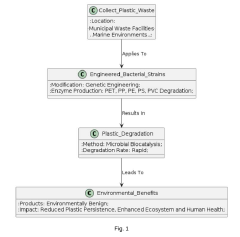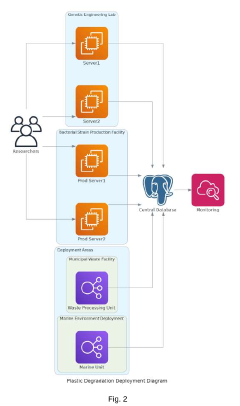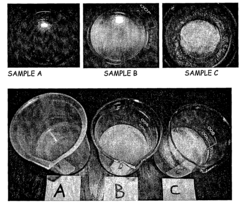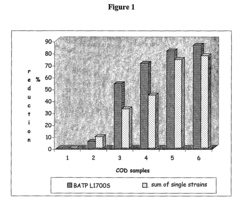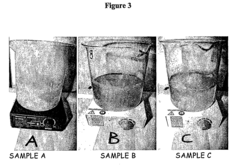Biodegradable Plastics Improve Sanitation Infrastructure
Biodegradable Plastics in Sanitation: Background and Objectives
Biodegradable plastics have emerged as a promising solution to address the growing environmental concerns associated with conventional plastics. In the context of sanitation infrastructure, these innovative materials offer a unique opportunity to improve waste management systems while reducing the ecological footprint of sanitation facilities. The development of biodegradable plastics has been driven by the urgent need to mitigate plastic pollution and its detrimental effects on ecosystems, particularly in water bodies and soil.
The evolution of biodegradable plastics can be traced back to the 1980s, with significant advancements occurring in the past two decades. Initially, the focus was on creating materials that could degrade in industrial composting facilities. However, recent research has shifted towards developing plastics that can biodegrade in various environments, including aquatic systems and soil, which is particularly relevant for sanitation applications.
The primary objective of incorporating biodegradable plastics into sanitation infrastructure is to enhance the sustainability and efficiency of waste management processes. By utilizing materials that naturally break down into harmless substances, the long-term accumulation of plastic waste in landfills and water treatment facilities can be significantly reduced. This approach aligns with the global push towards circular economy principles and sustainable development goals.
Another crucial aim is to improve the overall hygiene and functionality of sanitation systems, especially in developing regions where inadequate waste management poses severe health risks. Biodegradable plastics can be engineered to maintain their structural integrity during use while ensuring complete decomposition after disposal, thus preventing clogging and contamination issues often associated with conventional plastics in sewage systems.
The technology trend in this field is moving towards the development of bio-based and biodegradable plastics that can withstand the harsh conditions present in sanitation environments. This includes resistance to various chemicals, microorganisms, and physical stresses while maintaining their biodegradability. Researchers are exploring a wide range of natural polymers and their modifications to achieve the desired balance between durability and degradability.
As we look to the future, the integration of biodegradable plastics in sanitation infrastructure is expected to play a pivotal role in addressing global sanitation challenges. The technology aims to contribute to the United Nations Sustainable Development Goals, particularly those related to clean water and sanitation, responsible consumption and production, and life below water. By focusing on this intersection of materials science and environmental engineering, researchers and industry leaders are paving the way for more sustainable and resilient sanitation systems worldwide.
Market Analysis for Eco-friendly Sanitation Solutions
The market for eco-friendly sanitation solutions, particularly those incorporating biodegradable plastics, is experiencing significant growth driven by increasing environmental awareness and stringent regulations. This sector encompasses a wide range of products and services, including biodegradable toilet systems, compostable waste management solutions, and sustainable water treatment technologies.
Global demand for eco-friendly sanitation solutions is projected to expand rapidly in the coming years. Developing countries, facing challenges in traditional sanitation infrastructure, are emerging as key markets for innovative, sustainable solutions. Urban areas in these regions are particularly promising, as they grapple with population growth and the need for improved waste management systems.
The biodegradable plastics segment within this market is gaining traction due to its potential to address both sanitation and environmental concerns. These materials offer advantages such as reduced environmental impact, improved decomposition rates, and compatibility with existing waste management systems. The integration of biodegradable plastics into sanitation infrastructure presents opportunities for enhancing public health while minimizing ecological footprints.
Market drivers include growing public awareness of environmental issues, government initiatives promoting sustainable development, and corporate sustainability goals. Municipalities and private sector entities are increasingly seeking eco-friendly alternatives to traditional sanitation systems, creating a robust demand for innovative solutions.
However, challenges persist in the widespread adoption of eco-friendly sanitation solutions. These include higher initial costs compared to conventional systems, limited awareness in some regions, and the need for infrastructure adaptations. Overcoming these barriers requires concerted efforts in education, policy support, and technological advancements.
The competitive landscape is characterized by a mix of established players and innovative startups. Companies are focusing on research and development to improve the performance and cost-effectiveness of biodegradable materials in sanitation applications. Collaborations between material scientists, sanitation experts, and environmental engineers are driving innovation in this space.
Market segmentation reveals opportunities across various applications, including public restrooms, portable sanitation units, and household systems. The hospitality and tourism sectors are showing particular interest in eco-friendly sanitation solutions as part of their sustainability initiatives.
In conclusion, the market for eco-friendly sanitation solutions incorporating biodegradable plastics shows strong growth potential. As technology advances and awareness increases, this sector is poised to play a crucial role in improving global sanitation infrastructure while addressing environmental concerns.
Current State and Challenges in Biodegradable Plastics
Biodegradable plastics have gained significant attention in recent years as a potential solution to address environmental concerns associated with conventional plastics. However, the current state of biodegradable plastics in improving sanitation infrastructure presents both promising developments and notable challenges.
The development of biodegradable plastics has made substantial progress, with various materials now available in the market. These include polylactic acid (PLA), polyhydroxyalkanoates (PHAs), and starch-based plastics. These materials have shown potential in applications such as packaging, disposable cutlery, and agricultural films. In the context of sanitation infrastructure, biodegradable plastics are being explored for use in temporary sanitation facilities, drainage systems, and waste management solutions.
Despite these advancements, the widespread adoption of biodegradable plastics in sanitation infrastructure faces several challenges. One major obstacle is the variability in degradation rates and conditions. While some biodegradable plastics can break down relatively quickly in industrial composting facilities, they may not degrade as efficiently in natural environments or landfills. This inconsistency poses challenges for effective waste management and raises concerns about the long-term environmental impact.
Another significant challenge is the cost factor. Biodegradable plastics are generally more expensive to produce than conventional plastics, which can limit their adoption in large-scale sanitation projects, particularly in developing regions where cost considerations are critical. The higher production costs are often attributed to the need for specialized manufacturing processes and the limited economies of scale.
Performance issues also present challenges in the application of biodegradable plastics to sanitation infrastructure. Some biodegradable materials may not possess the same strength, durability, or chemical resistance as traditional plastics, potentially limiting their use in certain sanitation applications that require long-term stability or exposure to harsh conditions.
The lack of standardized testing methods and certification processes for biodegradability claims further complicates the landscape. This absence of uniformity makes it difficult for stakeholders to make informed decisions and can lead to confusion or misuse of the term "biodegradable" in marketing efforts.
Additionally, the infrastructure for proper collection, sorting, and processing of biodegradable plastics is still underdeveloped in many regions. Without adequate facilities to handle these materials separately from conventional plastics, the potential benefits of biodegradability may not be fully realized.
Research efforts are ongoing to address these challenges. Scientists are working on developing new formulations that offer improved mechanical properties and more predictable degradation rates. Efforts are also being made to reduce production costs through process optimization and the exploration of alternative feedstocks.
In conclusion, while biodegradable plastics show promise in improving sanitation infrastructure, significant challenges remain. Overcoming these obstacles will require continued research, investment in infrastructure, and the development of supportive policies to foster innovation and adoption in the field of biodegradable plastics for sanitation applications.
Existing Biodegradable Solutions for Sanitation Infrastructure
01 Biodegradable plastic compositions for sanitation infrastructure
Development of biodegradable plastic compositions specifically designed for use in sanitation infrastructure. These materials are engineered to degrade naturally over time, reducing environmental impact while maintaining necessary structural integrity for sanitation applications.- Biodegradable plastic compositions for sanitation infrastructure: Development of biodegradable plastic compositions specifically designed for use in sanitation infrastructure. These materials are engineered to degrade naturally over time, reducing environmental impact while maintaining necessary structural integrity for sanitation applications.
- Biodegradable plastic waste management systems: Implementation of waste management systems tailored for biodegradable plastics in sanitation infrastructure. These systems include collection, sorting, and processing methods optimized for biodegradable materials, ensuring proper disposal and potential recycling.
- Biodegradable plastic additives for enhanced degradation: Incorporation of specific additives into biodegradable plastics to accelerate their degradation process in sanitation environments. These additives are designed to promote faster breakdown of the materials without compromising their performance during use.
- Biodegradable plastic coatings for sanitation equipment: Development of biodegradable plastic coatings for sanitation equipment and infrastructure. These coatings provide protection and functionality while ensuring environmental compatibility through their ability to degrade naturally over time.
- Integration of biodegradable plastics in water treatment systems: Incorporation of biodegradable plastic components in water treatment and purification systems within sanitation infrastructure. These materials are designed to perform effectively in water treatment processes while minimizing long-term environmental impact.
02 Biodegradable plastic waste management systems
Implementation of waste management systems tailored for biodegradable plastics in sanitation infrastructure. These systems include collection, sorting, and processing methods optimized for biodegradable materials, ensuring proper disposal and maximizing environmental benefits.Expand Specific Solutions03 Biodegradable plastic coatings for sanitation equipment
Application of biodegradable plastic coatings on sanitation equipment and infrastructure components. These coatings provide protection and enhanced functionality while ensuring environmental compatibility through natural degradation processes.Expand Specific Solutions04 Integration of biodegradable plastics in water treatment systems
Incorporation of biodegradable plastic materials in water treatment and purification systems within sanitation infrastructure. These materials are used for filtration, membrane technologies, and other water treatment processes, offering eco-friendly alternatives to traditional plastics.Expand Specific Solutions05 Biodegradable plastic packaging for sanitation products
Development of biodegradable plastic packaging solutions for sanitation products and chemicals used in infrastructure maintenance. These packaging materials ensure proper containment and storage while minimizing long-term environmental impact.Expand Specific Solutions
Key Players in Biodegradable Plastics and Sanitation
The biodegradable plastics market for improving sanitation infrastructure is in a growth phase, driven by increasing environmental concerns and regulatory pressures. The market size is expanding rapidly, with projections indicating significant growth in the coming years. Technologically, the field is advancing, but still faces challenges in performance and cost-effectiveness. Companies like DuPont de Nemours, DSM IP Assets BV, and Kingfa Sci. & Tech. Co., Ltd. are at the forefront, developing innovative solutions. Research institutions such as Beijing Forestry University and Zhejiang Sci-Tech University are contributing to technological advancements. The competitive landscape is diverse, with both established players and emerging startups vying for market share, indicating a dynamic and evolving industry.
Advanced Industrial Science & Technology
Kingfa Sci. & Tech. Co., Ltd.
Core Innovations in Biodegradable Plastic Technology
- Engineered bacterial strains are genetically modified to produce plastic-degrading enzymes like lipases, esterases, and polyesterases, which are optimized for efficient degradation of a wide range of plastics, including PET, PP, PE, PS, and PVC, through controlled cultivation conditions and application methods such as direct inoculation and bioaugmentation.
- A biodegradable solid support carrying a mixture of non-pathogenic Bacillus bacterial strains, specifically Bacillus subtilis, licheniformis, megaterium, polymyxa, and circulans, which synergistically degrade organic pollutants and prevent agglomerate formation by producing enzymes that break down organic substances into carbon dioxide and water, even under disparate environmental conditions.
Environmental Impact Assessment
The environmental impact assessment of biodegradable plastics in improving sanitation infrastructure reveals both positive and negative effects on ecosystems and human health. On the positive side, biodegradable plastics offer a potential solution to the persistent plastic pollution problem in sanitation systems. These materials can break down naturally over time, reducing the accumulation of plastic waste in landfills, waterways, and oceans. This decomposition process can significantly decrease the long-term environmental burden associated with traditional plastic materials used in sanitation infrastructure.
Furthermore, the use of biodegradable plastics in sanitation systems can lead to improved soil quality and reduced contamination of water sources. As these materials degrade, they release fewer harmful chemicals compared to conventional plastics, potentially enhancing the overall health of ecosystems surrounding sanitation facilities. This is particularly crucial in areas where inadequate waste management systems may lead to the direct release of plastic waste into the environment.
However, the environmental impact of biodegradable plastics is not entirely positive. The production process of these materials often requires more energy and resources compared to traditional plastics, potentially leading to increased greenhouse gas emissions during manufacturing. Additionally, the degradation of biodegradable plastics may release methane, a potent greenhouse gas, if not properly managed in anaerobic environments such as landfills.
Another consideration is the potential for incomplete degradation or the release of microplastics during the breakdown process. While biodegradable plastics are designed to decompose, the rate and extent of degradation can vary significantly depending on environmental conditions. In some cases, these materials may persist longer than expected, continuing to impact ecosystems and potentially entering the food chain.
The use of biodegradable plastics in sanitation infrastructure also raises concerns about the potential for increased littering. If consumers perceive these materials as environmentally friendly, they may be more likely to dispose of them improperly, assuming they will naturally decompose without harm. This misconception could lead to increased plastic pollution in the short term, even if the long-term environmental impact is reduced.
In conclusion, while biodegradable plastics offer promising solutions for improving sanitation infrastructure, their environmental impact is complex and multifaceted. Careful consideration must be given to the entire lifecycle of these materials, from production to disposal, to ensure that their implementation truly results in a net positive environmental outcome. Further research and development are needed to optimize the degradation processes, minimize unintended consequences, and maximize the potential benefits of biodegradable plastics in sanitation systems.
Policy and Regulatory Framework for Biodegradable Plastics
The policy and regulatory framework for biodegradable plastics plays a crucial role in shaping the adoption and implementation of these materials in sanitation infrastructure. Governments worldwide are increasingly recognizing the potential of biodegradable plastics to address environmental concerns and improve waste management systems.
At the international level, organizations such as the United Nations Environment Programme (UNEP) have been instrumental in developing guidelines and recommendations for the use of biodegradable plastics. These frameworks often emphasize the importance of standardized testing methods and certification processes to ensure the authenticity and effectiveness of biodegradable materials.
Many countries have implemented or are in the process of developing specific regulations for biodegradable plastics. The European Union, for instance, has established the EN 13432 standard, which sets criteria for the biodegradability and compostability of packaging materials. This standard has been widely adopted and serves as a benchmark for many other regions.
In the United States, the Federal Trade Commission (FTC) has issued guidelines on environmental marketing claims, including those related to biodegradability. These guidelines aim to prevent greenwashing and ensure that consumers receive accurate information about the environmental attributes of products.
Developing countries are also making strides in creating regulatory frameworks for biodegradable plastics. India, for example, has banned certain single-use plastics and is promoting the use of biodegradable alternatives through various policy initiatives.
One of the key challenges in policy development is the need for a harmonized approach to testing and certification. Different standards and methodologies across regions can create confusion and hinder the widespread adoption of biodegradable plastics in sanitation infrastructure.
Policymakers are increasingly focusing on the entire lifecycle of biodegradable plastics, from production to disposal. This holistic approach includes regulations on raw material sourcing, manufacturing processes, and end-of-life management. Some jurisdictions are implementing extended producer responsibility (EPR) schemes, which hold manufacturers accountable for the environmental impact of their products throughout their lifecycle.
As research on biodegradable plastics continues to advance, policies and regulations are evolving to keep pace with technological developments. This dynamic regulatory landscape presents both opportunities and challenges for stakeholders in the sanitation infrastructure sector.
